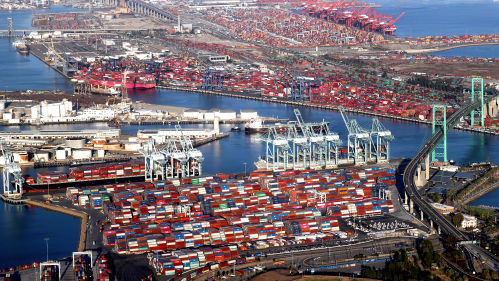How Worried Should We Be About Supply Chain Problems?

As President Joseph Biden announces a “90-day sprint” of around-the-clock operating hours at ports on the West Coast to get goods moving – a plan also intended to avoid shortages and continued price increases – we asked Rudi Leuschner, a supply chain professor at Rutgers Business School – Newark and New Brunswick, to explain the reasons for the supply chain problems and how they may impact the holiday season for U.S. consumers.
Why are ships backing up at the ports, preventing them from being unloaded?
It’s a simple capacity issue. Each port has a certain level of throughput that they can manage per day and per week. What’s been happening in the last six months or so is that there are more ships showing up at each port then can be processed. That is for a variety of reasons. Some of them had to do with shortages of key items and port closures in key areas that depressed the supply of items. Now, we have the opposite problem, everyone’s trying to catch up, everyone’s not just ordering what they need but they’re trying to build up their inventory that was depleted due to supply shortages that we saw during the pandemic.
Is this a ripple effect of the pandemic or is something else causing it?
The pandemic had much more wide-ranging effects than people who were sick and the lockdowns. One of the effects, among the many, was that a lot of people were out of work and that caused people to look at different jobs altogether. If someone was close to retirement and then there were lockdowns and they were furloughed, at that point, they probably took early retirement. We’re also seeing a generational shift, more people retiring than are entering the workforce, so there’s an imbalance on the labor side. It’s happening at the ports and throughout the whole logistics industry, which includes warehouses and transportation. I can’t drive by any warehouse without seeing signs advertising for workers. I keep driving by one sign where they’re looking for drivers for the company and they’re saying we’re paying $83,000 a year. That’s a good salary for a lot of professions, but especially for a truck driver. Truck drivers usually earned about $50,000-$60,000 so to see them being pushed up to $83,000 is impressive.
How panicked should consumers be about shopping for the holidays?
Well, I guess I have two answers. For an individual, I would say, if there are certain items that you must have, buying sooner than later is probably a good idea. However, from a societal perspective, we have to remember that every time people saw an item in short supply during the start of the pandemic, they bought more of it whether they needed it or not. That’s only going to exacerbate the shortages.
Companies are not just sitting by idly. As a company, you’re offering an assortment of goods, some are cheaper goods. Some are more expensive. Knowing that they can’t manufacture, transport, and deliver 100 percent of the items, they’re being selective about what items they are prioritizing. For example, with a lot of electronics, the higher-end items are in stock and a lot of the lower-end, entry-level items are out of stock. Some of that was intentional because if I’m only going to take 60 percent of the items, I’m going to take the ones that are most profitable. For consumers, another strategy would be if you don’t want to buy early and you can afford to upgrade to a better item, there’s a higher likelihood that the better item will be in stock.
What will it take to fix the current logjams?
There is sort of a natural way this is going to slow itself down and that’s because of the seasonality of things. Right not, we’re entering the hot part of the retail sales cycle. Until recently the twin ports of Los Angeles and Long Beach were operating on an approximately 90-hour per week schedule. Last month, Long Beach moved to 24/7 operations, and after a panel of port operators, carriers and shippers met with President Biden, the port of LA is moving to 24/7 operations as well. Some believe it is not enough to just operate the ports longer. There will have to be enough capacity to move the containers on the road as well. If this doesn’t help to break the bottleneck, then by the start of next year, it’s naturally going to ease. If companies want to fix things ahead of that, they will have to look at bringing goods to different ports. Smaller ships can enter the East Coast ports, which haven’t been as affected as the West Coast ports that handle most products coming from Asia. There’s always the option to fly for something like electronics. Flying is usually a multiple of a price increase – we’re not just talking double or triple, it’s probably several. It’s a lot more expensive, but for high value, low weight, low volume goods, that’s an option. That price will likely have to be passed on to the consumer.


